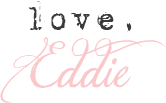Happy Tuesday, Lovelies!
If you are like me, photography for your wedding is like… thing numero uno, dudette. You love a beautiful image, so let me teach you a few basics to with your big, fancy camera to get the shot you want.
Don’t you hate it when you plug in an address to your GPS, and it takes you to the toll road when you know the side streets are faster and cheaper? It tells you to go down a one-way street? Sends to into killer traffic? Just like turning off GPS, once you understand exposure and the exposure triangle, you will be able get the results you want.
Understanding Exposure:
Your camera has a light meter. First, set your camera to “M.” Press your shutter release halfway down. You should see your camera information when you look through the viewfinder. Along the bottom, you will see your light meter.
---------------------------------------------
| | | | | | |
-3 -2 -1 0 1 2 3
Perfect exposure is about 0. I light brighter photos, so I like to expose between 0 and 1. Make sure you are looking through the viewfinder instead of looking at your LCD screen. If you put your camera down to look at your screen, the light will change.
Understanding the Exposure Triangle:
- Shutter Speed
- ISO/ Film Speed
- Aperture
Shutter Speed
Shutter speed is how fast the shutter opens and closes. The longer the shutter is open, the more light is in. Usually, shutter speed is measured in parts of seconds—as in time. (1/ XX) So, the larger the number, the faster the shutter closes.
The longer the shutter is open, the more light that you let in and the more likely you are to have a blur from your moment. The rule of thumb is to have the shutter speed be at least 2x your focal length. I usually shoot at 1/160 or faster.
---------------------------------------------
| | | | | | |
-3 -2 -1 0 1 2 3
2000 ----->> ----->> 160
ISO/ Film Speed
Remember when you would go to the store to purchase 100 speed film for your beach vacation? 800 speed film for high school graduation in the dark gym? Today, you can adjust your camera’s tolerance to light (ISO/ film speed) for every image.
ISO starts about 100 (to use when there is lots of light). Most starter DSLRs are only good till about 800 ISO (to use when it’s darker). The higher the ISO, the easier it is to shoot in low-light situations, but your image will lost be grainier the higher the ISO.
---------------------------------------------
| | | | | | |
-3 -2 -1 0 1 2 3
800 ----->> ----->> 100
Aperture
Aperture is the “depth of field.” You use aperture to determine what will be in focus. This is the best thing about shooting in manual!
When I want to capture a detail, I set a wide aperture (1.8). Setting a wide aperture takes a picture where very little is in focus. If you have an aperture with a large number is good for taking a picture of a whole room.
Apertures are lens-dependent. Apertures with small numbers are usually only available on “prime” (non-zoom) lenses.
The smaller the number on your aperture, the more light is let into your camera.
---------------------------------------------
| | | | | | |
-3 -2 -1 0 1 2 3
8.0 ----->> ----->> 1.2
To adjust your camera
Need more light/ Image too dark Need less light/ Image too bright
- Decrease the shutter speed (decrease - Increase shutter speed (increase dominator) dominator)
- Increase the ISO - Decrease ISO
- Reduce the number on your aperture - Increase the number of the Reduce aperture (increase number) aperture
Have questions? Let me know!








0 Haute Comments Posted:
Post a Comment